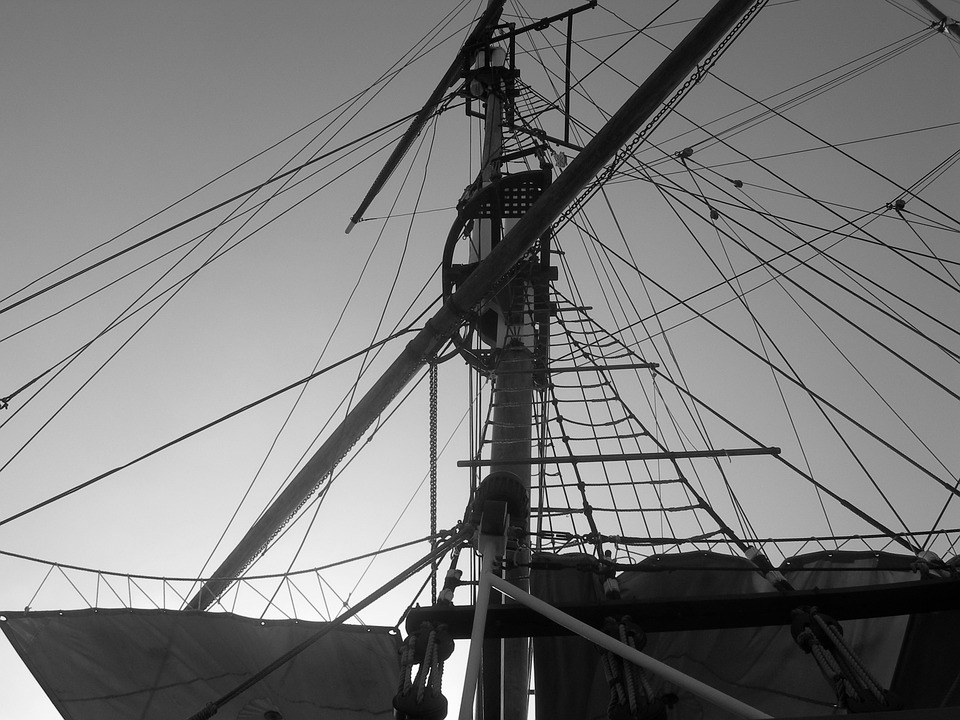By Iván Ulchur-Rota
While spending 3 years removing shipwrecks near the coasts of Nigeria, Cornelius Bockermann –who had been fascinated with ships from very early in his life– witnessed from up close the pollution generated by cargo ships. The experience inspired him to find alternative forms of marine transportation. Since then he heads Timbercoast Pty Ltd., a company that aims to offer transport with 90% reduced emissions by navigating with the wind, under sail.
“Blowin in the wind”, I tell Ben Decosse, Timbercoast’s charming spokesperson, when I talk to him about Cornelius, the vessel and their project in general. “Like in Bob Dylan’s legendary song”. Decosse laughs in agreement. He describes the company’s vessel like from an adventure story. She is called Avontuur, a two masted gaff rigged schooner built in 1920 that was operating as a bar in the northern European coasts when Bockermann found her.
Timbercoast adds ethical value to the supply chain by significantly —almost fully— reducing the carbon emissions of their operations. While conventional shipping takes advantage of cheap fuels to transport massive amounts of cargo in shorter amounts of time, cargo under sail markets its shipped products not just as “Fair Trade”, but as part of the Fair Transport Label, which supports emission-free shipping. With other sailing cargo ships, they are part the Sail-Transport Network.
While competing against conventional shipping is not easy, the challenges faced by Bockermann and his team forced them all to continue innovating. “We did not have 10,000 dollars to invest”, says Decosse. “But we found the support of over 160 volunteers who were committed to changing the way we transport cargo”. He smiles, pauses and emphasizes: “this is a community-based project”. Their first office was, literally, a container by the docks of Bremen, Germany, with wifi. That’s where they coordinated the restoration of Avontuur. It took longer than planned, almost 18 months, but they managed to change the outer part, the bottom and got the rigs adjusted. Now, they get the energy they need from solar panels installed inside the schooner. “Just as we wanted to show that it’s possible to transport cargo using only solar energy, we wanted to create a responsible and committed community in the process”. Community and teamwork are part of their strategy looking forward.
The philosophy behind Timbercoast is a global extension of local food initiatives. For Decosse, it is important to think about the environmental throughout the entire supply chain, not just during the extraction of raw products. “Transportation is often an afterthought for many buyers, when in fact the impact of the sort of bunker fuels and liquid gases these ships use is huge”. The alternative of cargo under sail requires consumers to be willing to change their habits. “Ideally”, Decosse explains, “we can learn to eat locally, according to what’s available. If you want blueberries, wait until it’s blueberry season”. This, however, is not always possible nor is it healthy. That’s precisely why the Timbercoast crew hopes to offer an alternative to export and import products in a way that’s coherent with the philosophy of those who choose to reduce their consumption footprint.
It’s hard not to get excited about the possibilities described by Ben. It’s like something taken from an epic novel for environmental geeks: sailing through the ocean while changing consumption trends. Of course, this dream demands commitment from producers and buyers alike. For example, would it take longer for the cargo to arrive? “Of course it would!”, Decosse exclaims. But to him, it’s important to understand how and why these processes take longer in order to make real changes to our consumption habits.
“We have gotten used to a destructive lifestyle with destructive expectations”. While the average cargo ship carries up to 19, 000 full containers, Avontuur carries three. “We are not competing and and we are not cheating nature”, he says. Timbercoast turns the transportation of cargo into an end in and of itself.
Who pays for the fast, motorized transportation of cargo ships? According to Transport & Environment, if left unregulated, shipping could account for up to 17% of all CO2 emissions by 2050. The fuels they current use are often cheap and of bad quality, banned in many countries. But in international waters it’s impossible to regulate their use. “The environment pays for all this pollution”. These ships also travel at full capacity, creating a vicious cycle: after they leave cargo at their destination, it’s often a loss to return without more cargo. They thus create new unnecessary markets to justify their enormous capacity.
Contrary to what one might imagine, the markup for transporting products on the Avontuur is barely noticeable. “You pay a little more for clean transportation”. “For 250 grams of coffee, you pay 50 extra cents”. It’s about understanding the value of the experience itself. “Producers can come on board and load or unload their products”. Decosse reiterates the connections that form in the process, thinking of these aspects of the supply chain as community-builders. “It’s a 5-person crew, but we hope to take producers on board to take coffee, for example, while following the wind”. For Timbercoast the adventure and poetry behind their project are an added value.
Up to now Avontuur has carried cacao, wine and ales. Its first cargo had private sponsorship and —like in honor of every good pirate novel— was rum and vodka. Now Avontuur will set sail to Honduras to pick up 30 tons of coffee and take them back to the winter of Bremen. “Our connection is the wind”, repeats Ben, proud of this project’s most innovative element: wind not only as an alternative form of energy, but as a way to connect with others, almost as if the man Dylan sings about in “Blowin in the Wind” turned his head and decided to see.


